So Many Reasons to Love Cement Tiles
Would you believe me if I told you cement tiles are a lot like checkerboard cake? Hear me out. When you slice into a checkerboard cake, you see alternating squares of chocolate and vanilla goodness. Cement tiles, popular in Mediterranean- and Latin-style spaces, are often highly patterned with geometric and floral designs. So what’s the connection? That lies in how the cake and tiles are made.
Like checkerboard cake batter, cement tiles are formed by hand pouring pigmented cement into decorative molds similar to cookie cutters to separate the colors. When the cement has set enough, the molds are removed and the tile is compressed under 2,000 pounds of pressure. The result is an irresistible work of art for floors or walls. Sounds pretty sweet, eh?
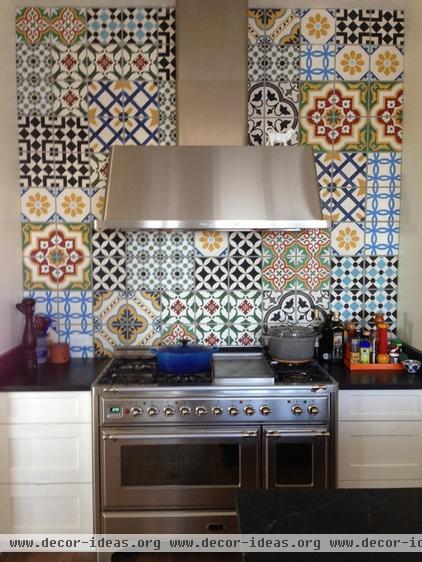
Cement tiles were first created in the South of France in the 1870s. They’re known by several different names, like Victorian tiles, Cuban tiles, hydraulic tiles and Mission tiles. Many people confuse cement and encaustic tiles. They look similar, but encaustic tiles have a base of clay, not Portland cement, and are fired in a kiln versus being compressed. Despite the differences, the terms are frequently used interchangeably in the marketplace.
To muck things up even more, cement tiles are technically concrete tiles because they include aggregates like marble dust and a layer of sand for reinforcement. For simplicity’s sake, though, they’re referred to as cement tiles.
The kitchen backsplash here shows a wide variety of traditional cement tile patterns installed in a random arrangement. Floral and Moorish geometric motifs are most prevalent.
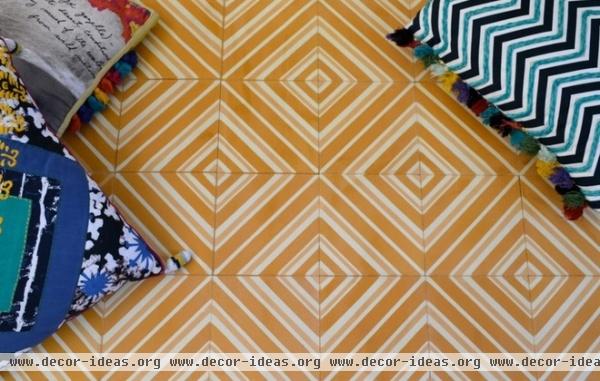
Sabine Hill Cement Encaustic Tile Besides their wonderful patterning, cement tiles have advantages over other types of tile:
Environmentally friendly. They’re made of natural components, and because they’re not fired, no fossil fuels are burned in their production. They’re also made with natural pigments.Nonslippery. Bare feet stay put, even when wet. Customizable. Each tile is hand crafted. If you don’t see an in-stock color combination, size or shape you like, a manufacturer can easily create one for you.
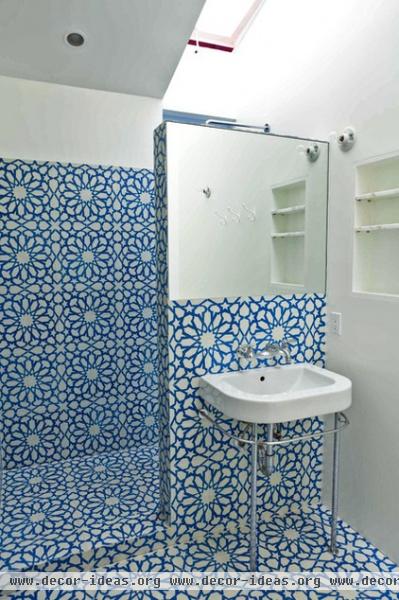
At ⅝ inch thick, cement tiles are chunkier than typical wall and floor tiles. This is worth noting if you’re abutting the tile to another material. Transition trim may be required to accommodate dimensional changes.
The top layer of tile, where the different-colored patterns lie, is ⅛ inch thick. While that colored layer is substantial, it doesn’t comprise the thickness of the entire tile. So, at exposed edges on wall installations, a coordinating trim piece, such as a bullnose, needs to be used. However, not all manufacturers make them.
This striking bathroom shows blue and white cement tile from Granada Tile installed at intersecting corners of the wall and step without the use of bullnose trim. The installer masterfully miter cut all these corner tiles at a 45-degree angle to allow the pattern to match up.
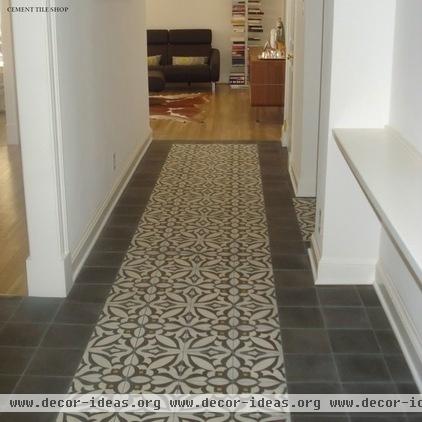
Cement tiles were traditionally designed to create one interlocking design using four tiles. Each tile is rotated 90 degrees to form one design unit. The tile runner shown here, by The Cement Tile Shop, illustrates this four-tile pattern for the length of the installation — two full patterns on each side.
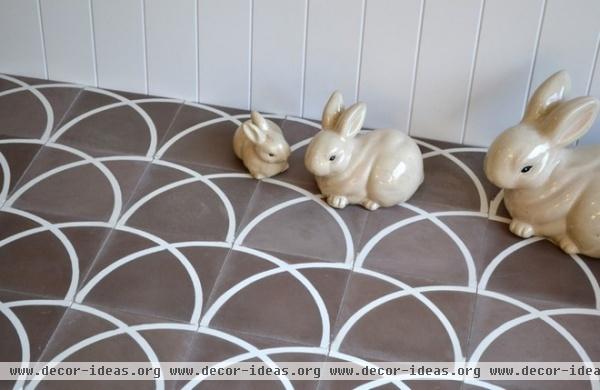
Sabine Hill Cement Encaustic Tile Cement tile patterns work in nearly every style home. If the livelier Moorish-inspired patterns are too busy, consider a simpler two-toned geometric pattern, such as this linear design by Filmore Clark.
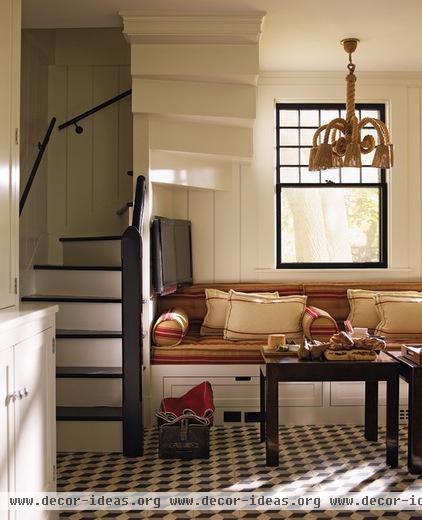
This seating area, designed by Steven Gambrel, has a cement tile with a cube motif. While introducing pattern to the floor, the small design isn’t overwhelming.
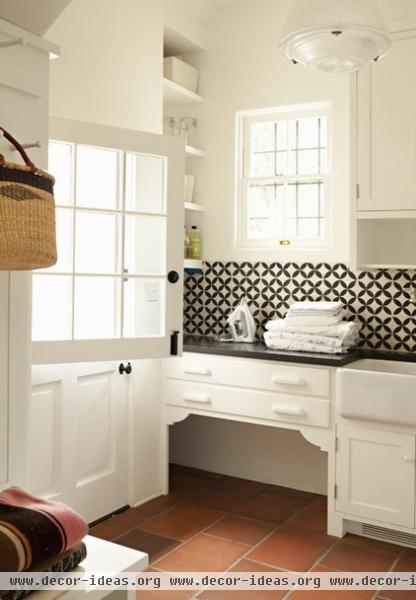
A backsplash made of black and white tile is a graphic focal point of this clean-lined, traditional kitchen.
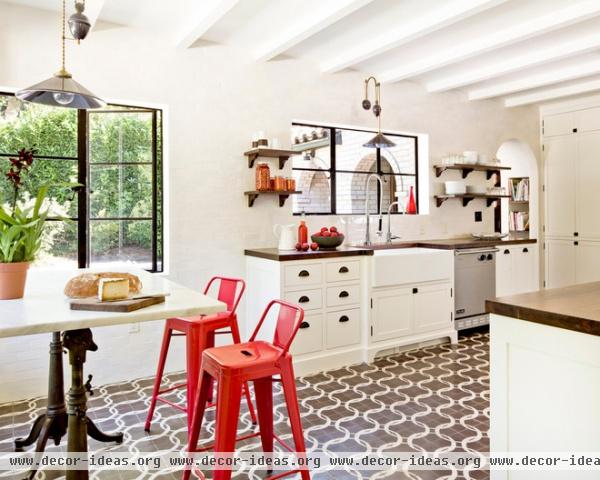
Cement tiles are typically 8 by 8 inches and run about $15 to $29 per square foot.
They’re installed in the same manner as ceramic or porcelain tile, with one major difference. Cement tile needs to be sealed with two coats of penetrating sealer after it’s been set but before grouting. The sealer protects the face of the tile from absorbing the grout material.
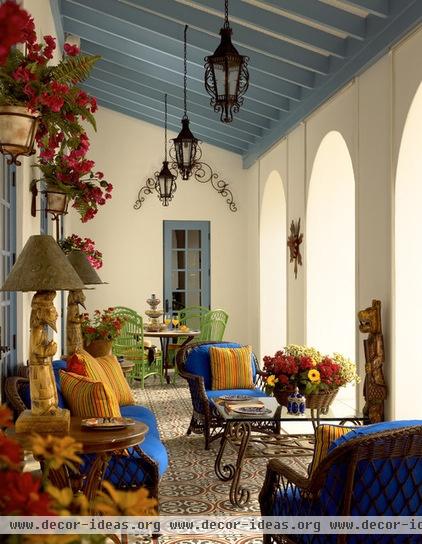
As many people are increasingly spending time in outdoor home spaces, cement tiles are a great choice for a patio, as long as you live in a temperate climate that doesn’t freeze.
Wet areas, such as showers, are fine, but cement tile installation on walkways around pools is not recommended, because water-treatment chemicals will damage the tile.
Durable, decorative and environmentally friendly, cement tiles may just take the cake!
Your Floor: How to Shop for Tile












